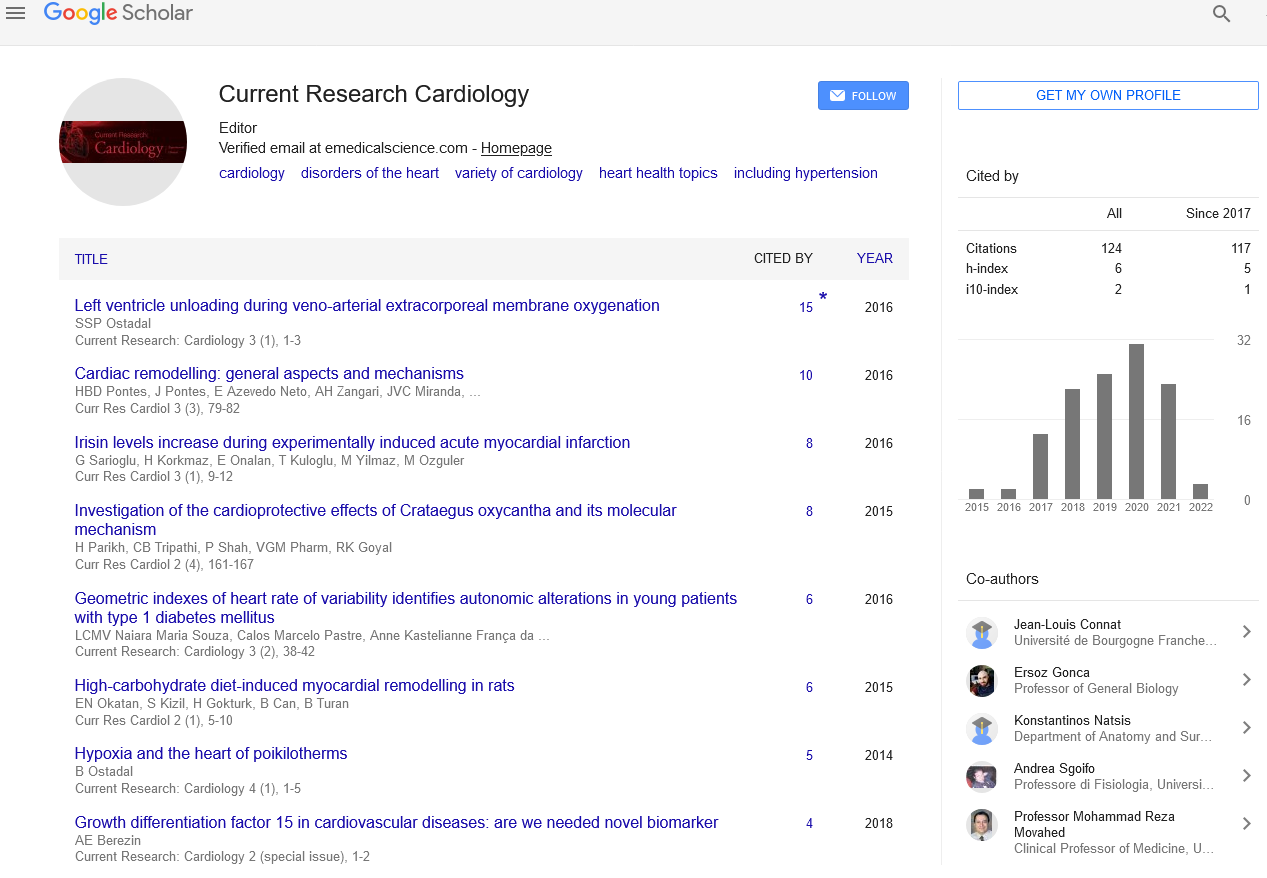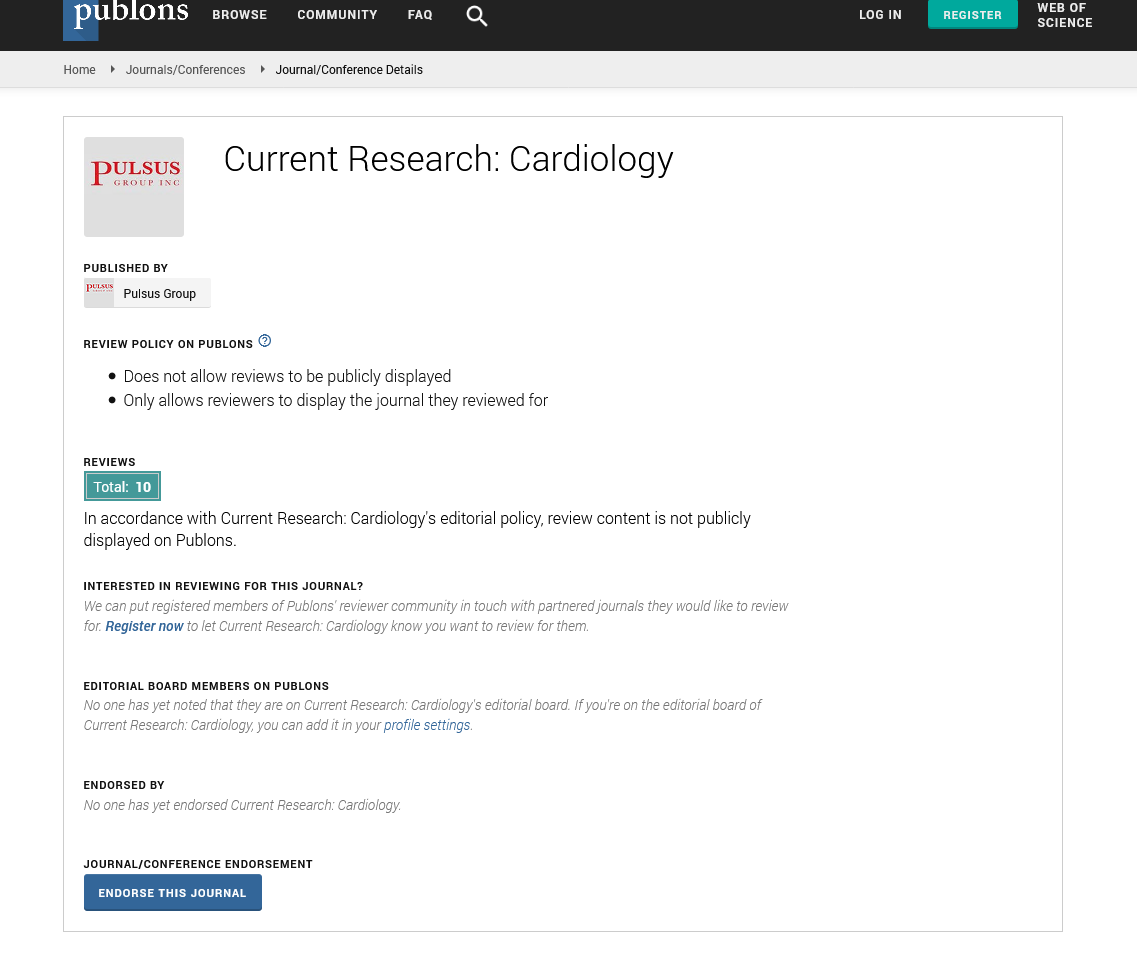Assessment of pulmonary circulatory system
Received: 02-Aug-2021 Accepted Date: Aug 16, 2021; Published: 23-Aug-2021, DOI: 10.37532/2368-0512.2021.8(1).118
Citation: Alavi A. Assessment of pulmonary circulatory system. Curr Res Cardiol. 2021;8(1):3.
This open-access article is distributed under the terms of the Creative Commons Attribution Non-Commercial License (CC BY-NC) (http://creativecommons.org/licenses/by-nc/4.0/), which permits reuse, distribution and reproduction of the article, provided that the original work is properly cited and the reuse is restricted to noncommercial purposes. For commercial reuse, contact reprints@pulsus.com
Description
The cardiovascular system, which is additionally named because the circulatory system, is an organ system that allows blood to circulate and transport nutrients (such as amino acids and electrolytes), oxygen, CO2, hormones, and blood cells to and from the cells within the body to provide nourishment and help in fighting diseases, stabilize temperature and pH, and maintain homeostasis.
The cardiovascular system includes the systema lymphaticum, which circulates lymph. The passage of lymph takes for much longer time when compared to blood. Blood may be a fluid consisting of plasma, red blood cells, white blood cells, and platelets that's circulated by the guts through the vertebrate system, carrying oxygen and nutrients to and waste materials away from every body tissue. Lymph is actually recycled excess plasma after it's been filtered from the extracellular fluid (between cells) and returned to the systema lymphaticum.
The cardiovascular system comprises all the blood, heart, and blood vessels. The lymph, lymph nodes, and lymph vessels form the systema lymphaticum, which returns filtered plasma from the extracellular fluid (between cells) as lymph. The cardiovascular system of the blood has two components, a circulation and a circulation.
Pulmonary Circulation
Pulmonary circulation which is that the system of blood vessels that forms a loop between the guts and therefore the lungs, as distinguished from the circulation between the guts and all other body tissues. On the evolutionary cycle, circulation first occurs in lungfishes and amphibians, the primary animals to accumulate a three-chambered heart. The circulation becomes totally separate in crocodilians, birds, and mammals, when the ventricle is split into two chambers, producing a four-chambered heart.
• The circulatory system consists of two circulatory paths: circulation, the circuit through the lungs where blood is oxygenated and circulation, the circuit through the remainder of the body to provide oxygenated blood.
• Within the circulation, blood travels through capillaries on the alveoli, air sacs within the lungs which permit for gas exchange.
• As blood flows through circulation, the dimensions of the vessel decreases from artery/vein, to arteriole/venule, and eventually to capillaries, the tiniest vessels for gas and nutrient exchange.
• Systemic and circulation transition to the other quite circulation once they return blood to the other side of the middle.
• Circulation may be a much larger and better pressure system than circulation.
In these forms the pulmonary circuit begins with the right ventricle, which pumps deoxygenated blood through the pulmonary artery. This artery divides above the middle into two branches, to the proper and left lungs, where the arteries further subdivide into smaller and smaller branches until the capillaries in the pulmonary air sacs (alveoli) are reached. In the capillaries the blood takes up oxygen from the air breathed into the air sacs and releases CO2. It then flows into larger and larger vessels until the pulmonary veins (usually four in number, each serving a whole lobe of the lung) are reached. The pulmonary veins open into the guts atrium sinistrum, atrium cordis, and left atrium of the heart.






